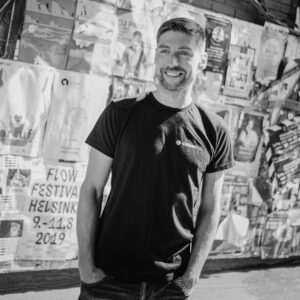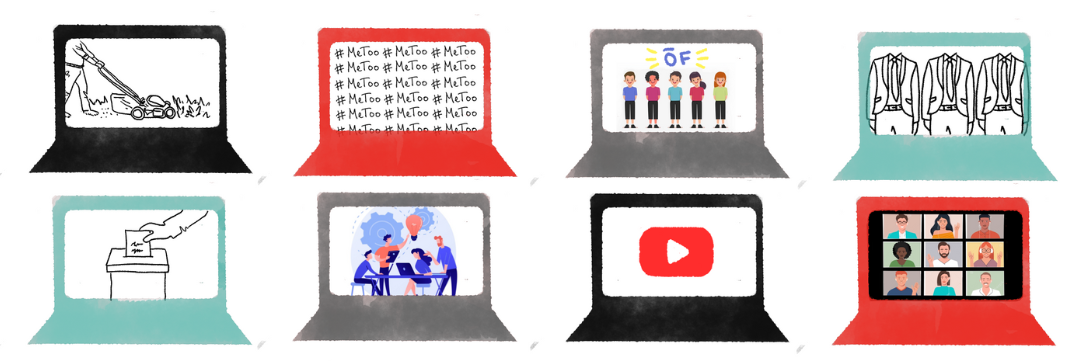
Margo Loor, CEO of Citizen OS
I`m born into this world, my first experience with social systems is family and home. They already exist, and I`m born as a member of them; I do not need to actively build them myself or participate in shaping them. As I get older, I may have to do chores; for example, I have to occasionally mow the lawn in the garden, but these tasks are more of an additional activity; family and home do not rest on them. Some young people have to take on a significant part of the household from a fairly early age, but then this is due to the inability of the parent(s) to cope rather than by way of a jointly negotiated agreement. Most young people do not feel actively involved in caring for the family while living in their birth family.
I go to kindergarten and then to school. These are the next social systems, which I will come into closer contact with and become a member of. Kindergarten and school are ready before I join them, and they will continue to exist after I leave. At the beginning I will be introduced to how things are done there, who I must obey, who makes the decisions. It is my job to observe those words and decisions. I myself am not actively involved in caring for the kindergarten or school. Of course, I could, especially at school. I can join the editorial of a school newspaper, maybe in the final grade, even become the editor-in-chief. In some schools, I can stand for election and be a representative of my class in the student parliament or a representative of students on the board of trustees. This way, I can become an active co-creator of school life. However, there is a question of how many young people, as students, have this opportunity, or if they do, how many, after 15 years of obeying others, realize that perhaps I am the one who creates and cares for the world around us.
Many young people, of course, choose differently, and I am sincerely happy for them. They establish a spikeball or e-sports club with friends instead of going to an existing workout. They create a Youtube channel for investing or building cars, set up an environmental association, start a student company.
We learn the most through role models and experiences. Young people who go through an already established journey in already established systems will later feel that the state is also created and cared for by someone else somewhere else; it does not depend on them. Self-initiative, active participation, and involvement do not magically occur with their 16th or 18th – birthday. It starts at home and in kindergarten, at school and in sports practice. In SPIN training, coaches gather from young people suggestions for activities and then vote on those options together with the young people. One is not born as a good e-citizen; one learns to be that. Learning takes place mostly through role models and experiences, rather than by reading a textbook in a social studies class. The same goes for becoming an e-citizen.
In the world, Swiss democracy is often set as an example, and they have indeed succeeded in building a system in which citizens are very actively involved in shaping their country, so they also apply and feel that involvement. In recent decades, there have been 6-10 referendums a year on issues raised by citizens themselves. At present, however, Switzerland is working hard on transferring a well-functioning democracy into the e-environment. Why? Firstly, because young people are living more and more of their lives in e-environments and often prefer e-communication to traditional communication. Secondly, because of the global economy, societal debates, and more recently, education is moving rapidly into the e-environment, and the organization of society must follow. Democracy must become e-democracy in order to survive. In Estonia, we have dealt a lot with e-government and e-governance, but e-democracy and e-citizenship have received less attention.
I do not know exactly what happened to student parliaments, student governments, and youth councils during the emergency situation and the pandemic, but I hope that issues were raised, debates were held, and votes were organized via the e-environment. In many cases, however, work could be interrupted due to the lack of skills and readiness. It challenges us to enable young people to co-create their own (e)-environment for growth and development so that (e)-participation would become natural for them.
Democratic e-participation is facilitated by some skills, such as literacy and digital literacy, as well as the skill of reasoned communication, listening, and calm negotiation (especially calm disagreement). Among Estonian youth, things are very good in terms of some of those skills (e.g., literacy), while in terms of others (e.g., the skill of calm disagreement), things are much worse. The more all people and institutions who come into contact with young people teach these skills, but more importantly, the more they apply them themselves and thus set an example, the more skilled e-citizens young people in Estonian can become.
In addition to skills, e-participation also needs environments. At the national level, we currently have an e-election environment and the Citizen Initiative Portal (rahvaalgatus.ee), at a local level, the Local Citizen Initiative Portal (local.rahvaalgatus.ee), and inclusive budget votes taking place mainly through VOLIS. Citizen OS (citizenos.com) is best suited for discussions and votes in the student parliament, youth club, village community, and at other grassroots levels. It is always possible to create your very own system from a completely blank page or by combining existing freeware components and open data.
The third important component is the process that combines skills and resources into a whole. It is necessary to think about the way ideas will be gathered, debates organized, when and how the vote will take place, how to keep the participants actively involved in the co-decision process, and how the decision will be implemented after the vote. It would be good if young people could come up with a significant part of the process themselves.
Let’s look at an example of how these parts could be intertwined into a whole. With Citizen OS, we have brought young people together twice to create in ten days an environment where they could develop their e-participation and e-decision-making skills. In both cases, it was an international group. First, about 20 young people gathered either physically or virtually (via Zoom) in the same room, got to know each other, engaged in various team-building activities. Each of them then formulated a social problem that he or she was most motivated to solve. Based on the problems, smaller groups of young people emerged and started developing solutions. A virtual organization, which chose a new management for each day and received a task to solve every day, was also formed of all the participants. The task of the first day was simple, for example, to jointly choose a name for the organization. The tasks of later days could already be more complex, such as figuring out how to ensure non-discrimination and a sense of security for all members in their virtual organization.
At the same time, workshops and classes were taking place to develop young people’s skills of reasoned self-expression, design thinking, leadership, creating social change, etc. Relying on improved skills, young people could keep further developing the solutions they were creating, the applicable versions of which would be posted in the Citizen OS environment, where others could present arguments for and against the plans on an ongoing basis.
By the end of the ten-day activity, plans for alleviating or solving social problems were hatched and it was possible to start implementing those plans. During the process, a number of skills important for e-participation were developed, various e-tools and environments used, and the constantly and actively participating young people had co-shaped the process.
Local elections are in October. Before the elections, candidates are tempted to promise ready-made solutions: we will build a skatepark here, a playground there, we will buy a powerful computer for the youth center to engage in e-sports, we will offer funding for a music school, etc. I challenge readers to think about what kind of youth initiatives, opportunities supporting the co-creation of young people`s growth spaces should an exemplary local government embody. When meeting with candidates, you can bring up these opportunities first. It is also possible to see whether candidates come to meet young people in a physical space or invite them to an e-environment. A part of learning to become an e-citizen is to practice civil rights, including meeting candidates in an e-environment.
Let us also talk a little about the impact. There are still people who say that “e” is not real, and this probably describes their own reality quite truthfully. However, for almost four billion people in the world, “e” is already very real, and the younger these people are, the more real the e-world is. Cancel culture is an example of applying very effective social pressure in the e-environment. It is certainly not an unequivocally positive phenomenon, but it is civic activism, and it is effective. Another example – last year, even the Estonian media wrote about how activist investors caused anxiety in the world’s financial markets when they came out en masse in support of GameStop, a US company that sells computer games. The campaign took place mainly through the RobinHood trading platform and was thus effective e-civic activism. The anti-gender discrimination movement #MeToo has even got its name form of a hashtag used in e-environments and is probably one of the most influential global-civic movements in recent years. The more electronic materials that affect our lives are, the more effective e-activism and the greater the role and importance of e-inclusion will be. Especially in Estonia, where a very large part of our way of life is electronic, we could move on from the question “Is e- involvement real?” and ask everywhere, “How to make e-participation as value-creating as possible?”.
No matter how good the e-participation environments we create, e-participation is a set of skills, tools, and processes. Young people do not jump into this set suddenly when they turn 16 unless they have previously experienced (e-)participation and seen it as an example around at home, at school, at sports practice, and in the community. One is not born as a good e-citizen; one learns to be that.
The cover image was designed by young Estonian artist Margaret Pütsepp.

